Here at DC Histories, we try to make sense of the continuity that perplexes, befuddles, and intimidates. We discuss what worked and what didn’t. This week, we’re talking about some of the DC books that have been based on toy lines.
Masters of the Universe
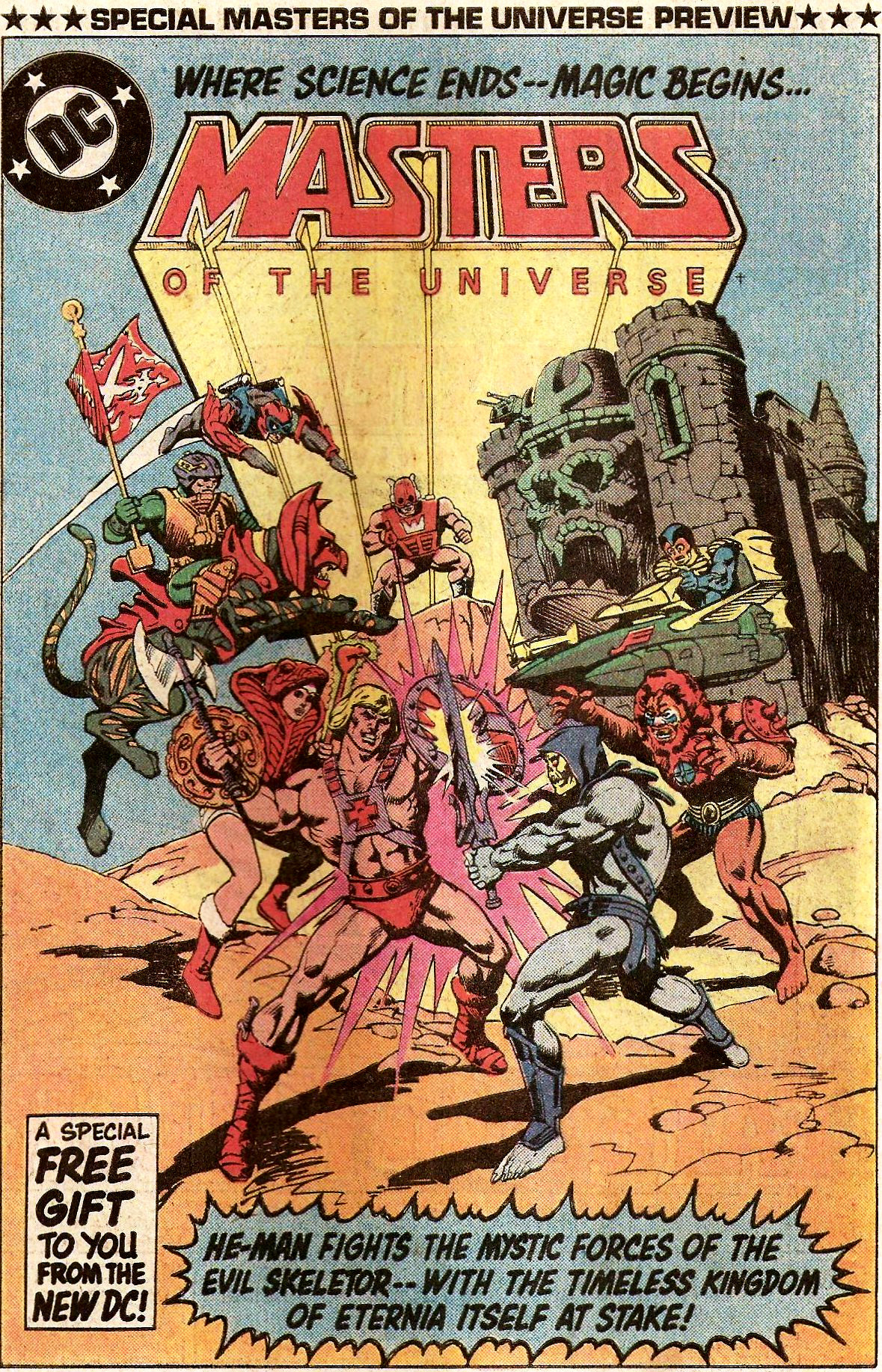
From Masters of the Universe Preview (1982)
The Masters of the Universe first burst on the scene in 1982 as a line of action figures. Originally, the toy line was relatively small and consisted only of four heroes, three villains, an impartial observer, a few vehicles, and other add-ons. Each of the figures came with a mini-comic, which told the tale of Eternia and chronicled the ongoing war between the forces of good, lead by He-Man, and the forces of evil, lead by Skeletor. Later that same year, the license was granted to DC to create several full size comics dealing with the franchise.
Realizing that few readers knew about the Masters of the Universe, the first thing DC did was have Superman journey to Eternia in the pages of DC Comics Presents #47. There, readers experienced Eternia through the eyes of a character they knew well. It was an easy introduction to the world. A few months later, several issues of DC Comics were granted a special 15-page insert which told of Superman’s second journey to Eternia. Only the timely intervention of He-Man kept Skeletor from killing the Man of Steel.

From Masters of the Universe Preview (1982)
The month after the preview was published, a three issue miniseries titled simply The Masters of the Universe hit stands. In the pages of this miniseries, the dynamics of Prince Adam and his family were examined without a member of the regular DCU present. Though he kept it a secret from his family, Prince Adam was He-Man, hero of Eternia. The first time He-Man ran into Prince Adam’s parents, he was certain that his cover would be blown. After all, it wasn’t like He-Man wore a mask or Prince Adam wore glasses. Luckily, his parents were blinded by their hero worship and Prince Adam’s incredibly transparent ruse went undiscovered.
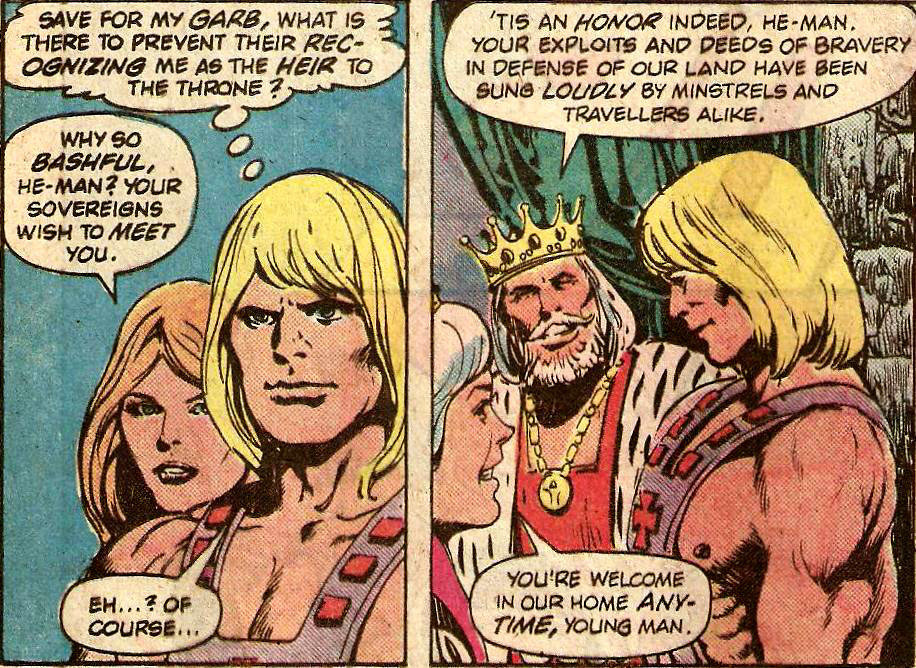
From Masters of the Universe (Vol. 1) #1 (1982)
Masters of the Universe‘s plot revolved around Skeletor forcing He-Man to hunt for the Sword of Power. All of the seven action figures currently in production when this comic book was released were found in the pages of the book. Since only three foes were too few for He-Man to battle, several monsters who were never given action figures eventually popped up to fight He-Man.
Perhaps the series’ highlight came when Skeletor got his hands on the Sword of Power. It’s a wonderful page.
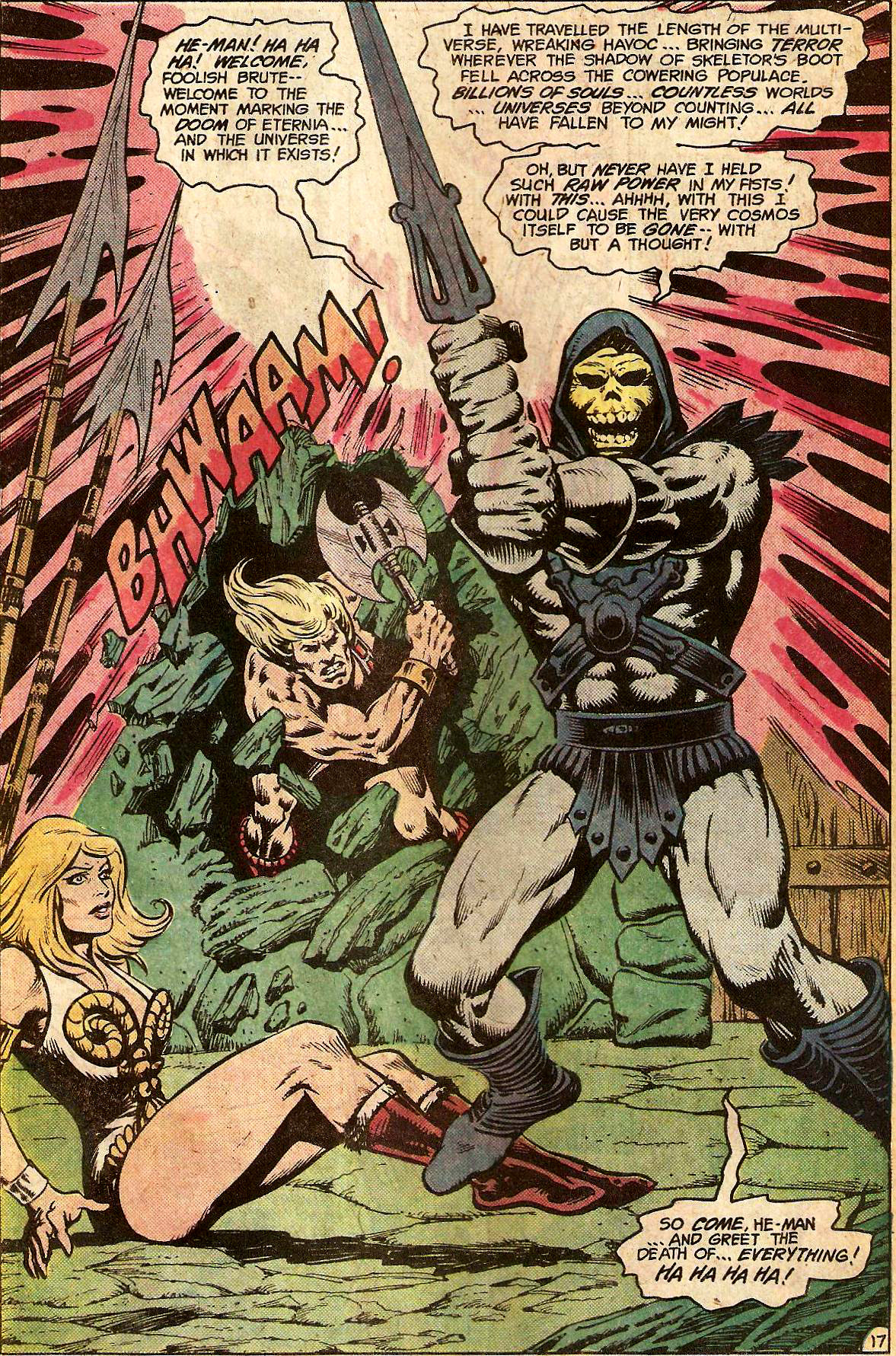
From Masters of the Universe (Vol. 1) #3 (1983)
After this miniseries wrapped up, DC wouldn’t published another Masters of the Universe comic for nearly three decades. However, in 2012, the license finally made its way back to DC and the publisher began releasing new stories featuring these characters in both digital-first and regular print editions. Among the stories told in these comics was a new origin tale for Skeletor, written by Joshua Hale Fialkov and drawn by Frazer Irving. It’s an excellent comic.
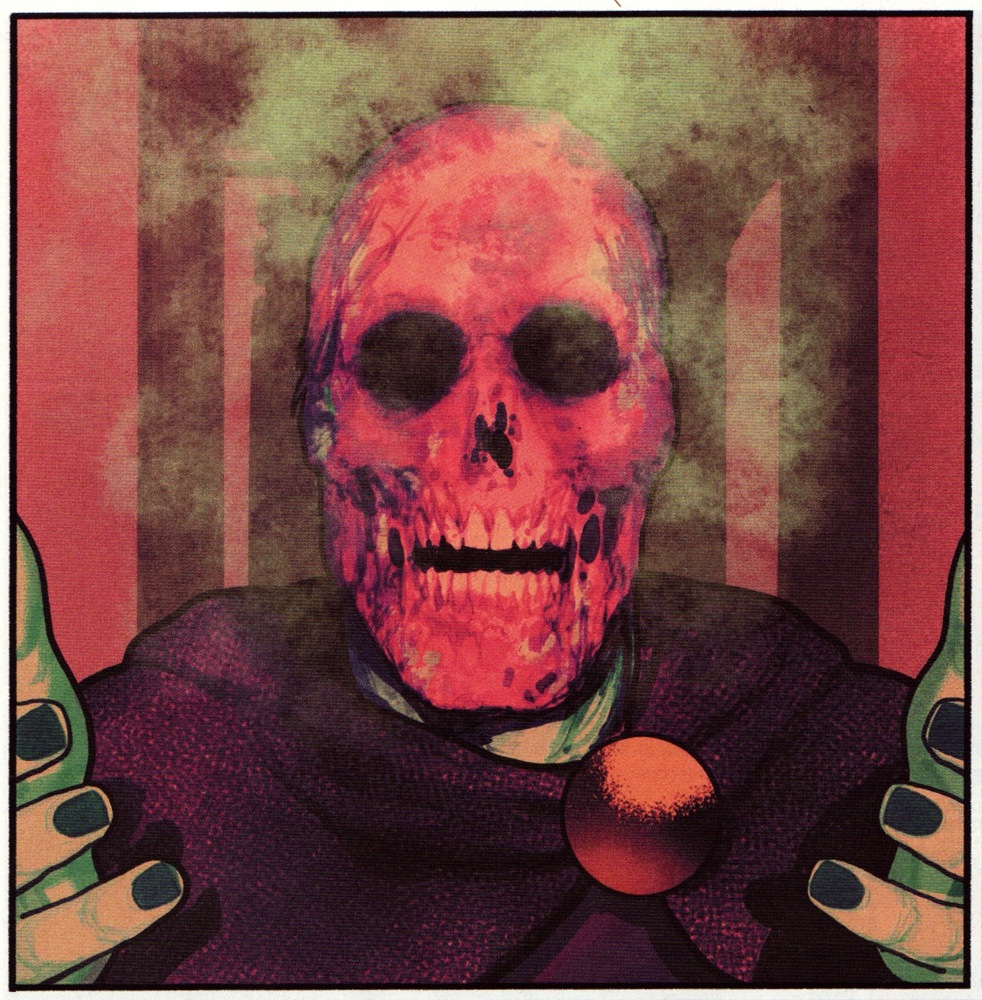
From Masters of the Universe: The Origin of Skeletor #1 (2012)
New adventures of He-Man and his surrounding characters are still coming out from DC. The world that these characters exist in has expanded exponentially since their 1982 debut and its a richer world that what has come before. Curious fans should seek these comics out.
Super Powers
Seeing the success that other toy makers were having with their lines of collectible action figures, Kenner jumped in the game in 1984 with the Super Powers Collection which were based on DC superheroes. Attempts were made to make the Super Power logo ubiquitous across all the marketing platforms that DC had access to including television, home video, action figures and, of course, comics. In 1984, the first of three Super Powers comic miniseries was launched.

Super Powers (Vol. 1) In-House Ad (1984)
The action figures in the Super Powers line were pretty basic. They looked just like their comic book counterparts. If a figure seemed to require an accessory, like Penguin needing an umbrella, he came with one but that was about it. Realizing that something different had to happen in the comic in order to differentiate it from the normal line of comics, Darkseid granted actual super powers to a few of the villains in the DCU. Lex Luthor suddenly became able to control time, the Joker began to manipulate reality, and the Penguin even started controlling all bird life in Gotham.
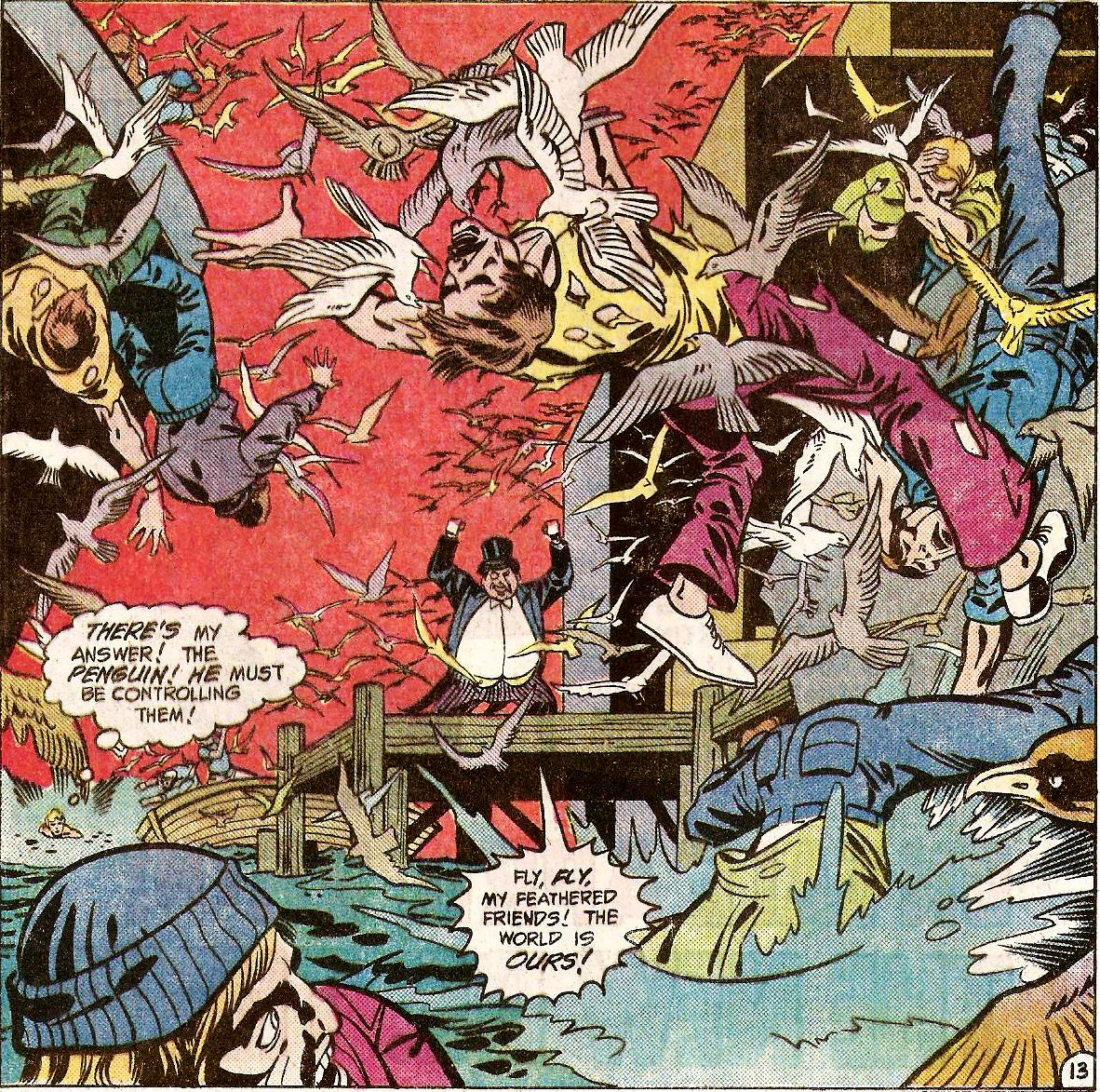
From Super Powers (Vol. 1) #1 (1984)
This first miniseries was plotted by the great Jack Kirby and he penciled the various covers and house ads for the series. The interiors were done by others in a style that aped him but never reached his heights. Kirby did step in to fully write and pencil the final issue in the series. It was in that story that the main characters – all of whom had fun action figures that readers could buy in a store near them – worked together to stop Darkseid from destroying the world. They did this by using something called the Worlogog, a device used by Metron, a New God.
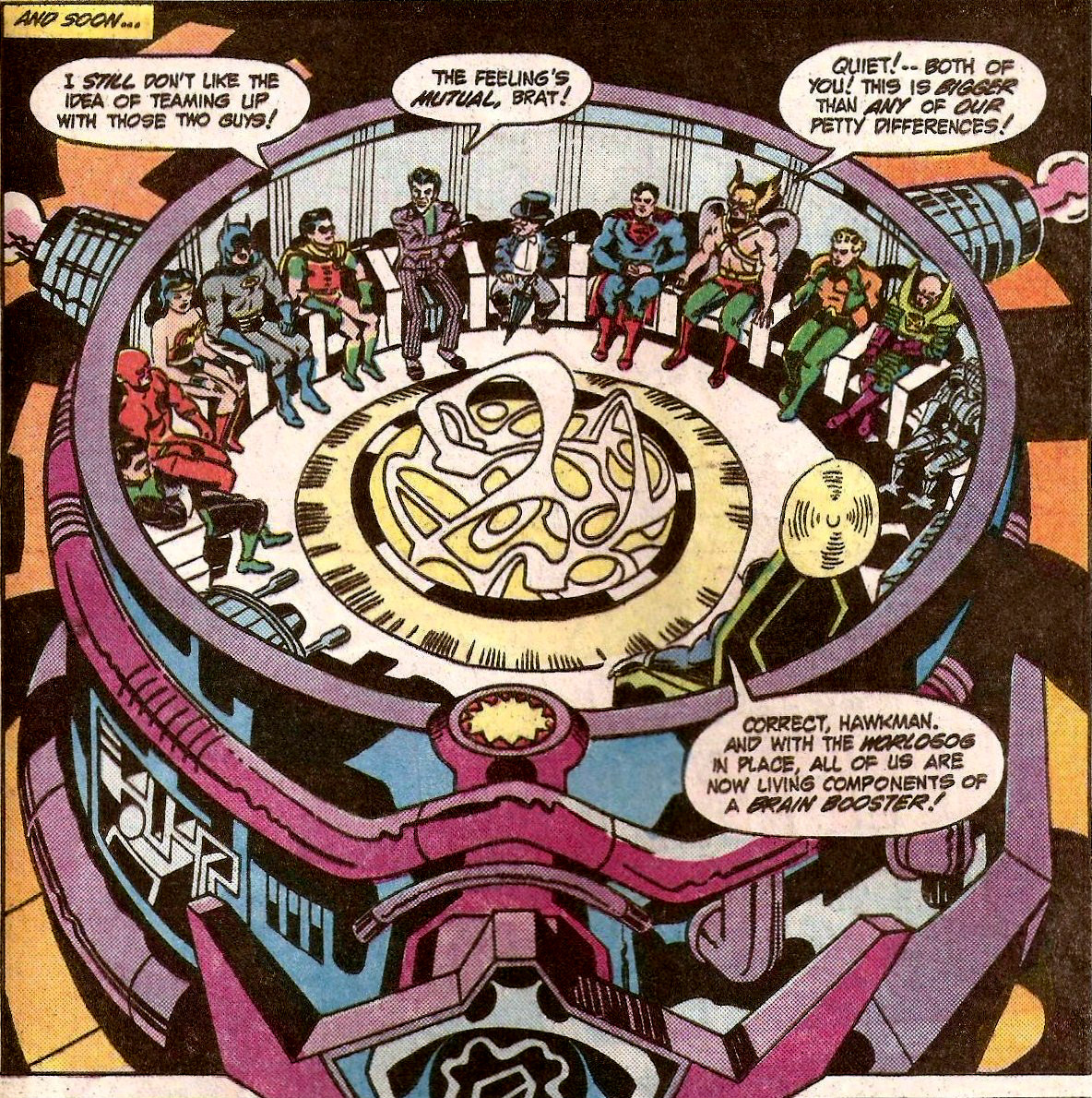
From Super Powers (Vol. 1) #5 (1984)
Though the Super Powers miniseries are generally considered to not be in the standard DCU continuity, this appears to be the first mention of the Worlogog. I may be wrong on that point as I haven’t read the entirety of Kirby’s New Gods output. The Worlogog would go on to have an impact on later standard DCU stories as it was used during Grant Morrison’s run on JLA in the 1990s and it was an object of power during the JSA ongoing series.
As tends to happen in most of the stories concerning Darkseid, the ruler of Apokolips’ plans were squashed but he escaped before he could be truly defeated. He returned the following year in the second Super Powers miniseries, this time written by Paul Kupperberg but completely penciled by Jack Kirby himself. By the time the third miniseries was published in 1986, Kirby was no longer involved. This third series seemed even more dictated by the toy line than what had come before. The heroes in the story were just flat-out referring to themselves as the Super Powers Team for marketing and cross-promotional reasons. Also, they seemed to be using some pretty nifty vehicles, which were also available from readers’ local toy stores.
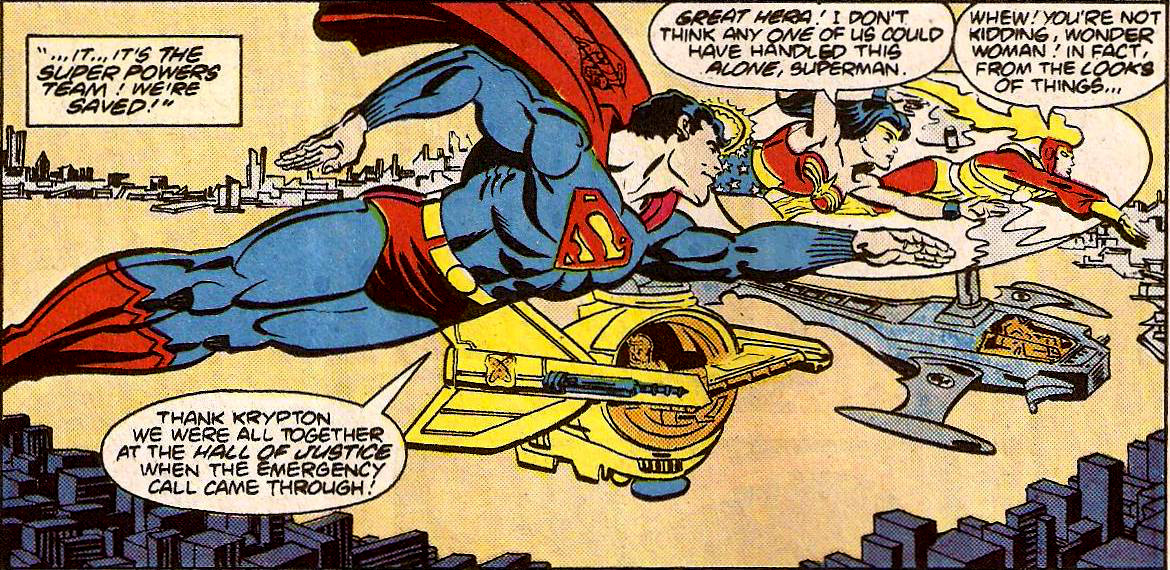
From Super Powers (Vol. 3) #1 (1986)
However, there was fun to be had in this series. For instance, take the moment where Darkseid has lost his mighty strength and Omega Beams. Finding himself in an urban environment, he attempts to break into a clothing shop with a crowbar so that he could potentially pass as a normal human.
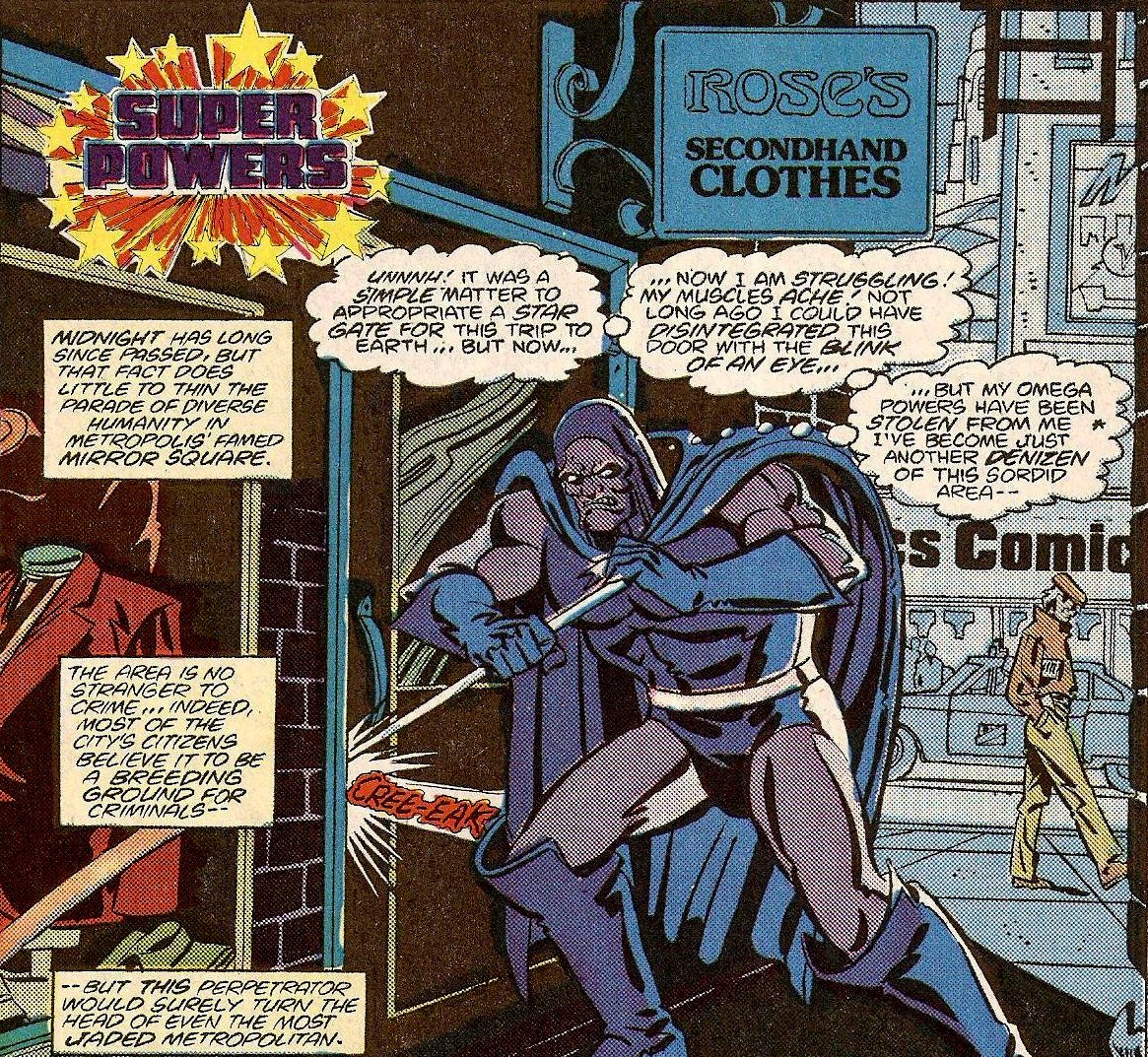
From Super Powers (Vol. 3) #3 (1986)
In 1986, the Super Powers Collection stopped being produced and the name fell out of use. Although the third Super Powers miniseries ended with its plots unresolved, a continuation of the story was never published.
Total Justice
A decade after the last Super Power toy hit store shelves, a set of action figures called Total Justice was produced. Updated to reflect the current versions of the DCU characters, these were the first toys produced of characters like Kyle Rayner, Connor Hawke, and the Huntress. To help celebrate the launch of this new line, a three-issue miniseries was published in 1996 titled Total Justice. In that series, characters began using a variety of neat gadgets and do-dads that came with their respective action figures.
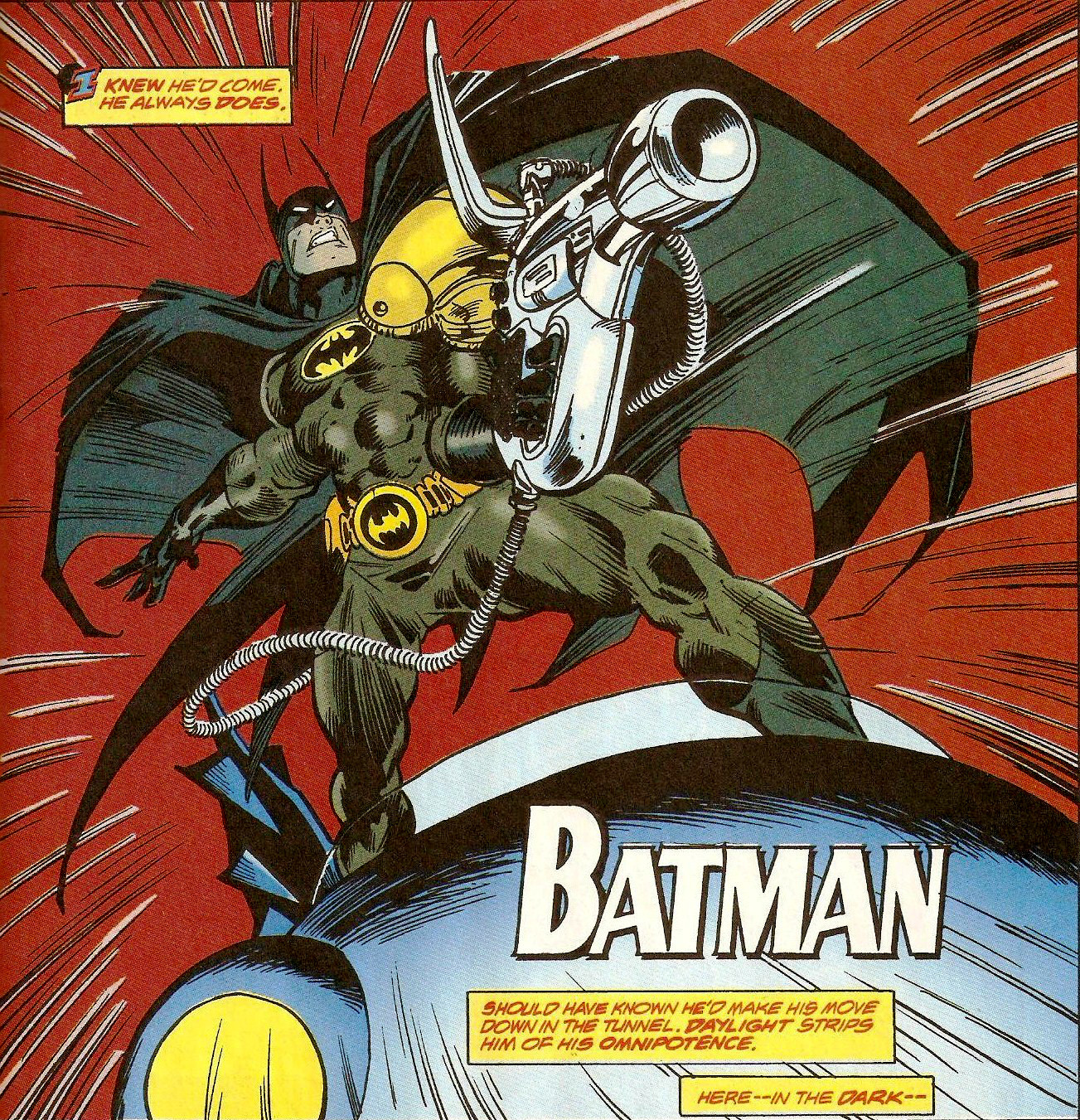
From Total Justice #1 (1996)
None of this technology was more obvious than something called “fractal techgear.” While this fractal armor came in a variety of shades of color with the action figures, it was presented as a dull off-white in the pages of the comics. So, not only did it look widely out of place for, say, the Flash to be wearing armor, it was also aesthetically unpleasant.
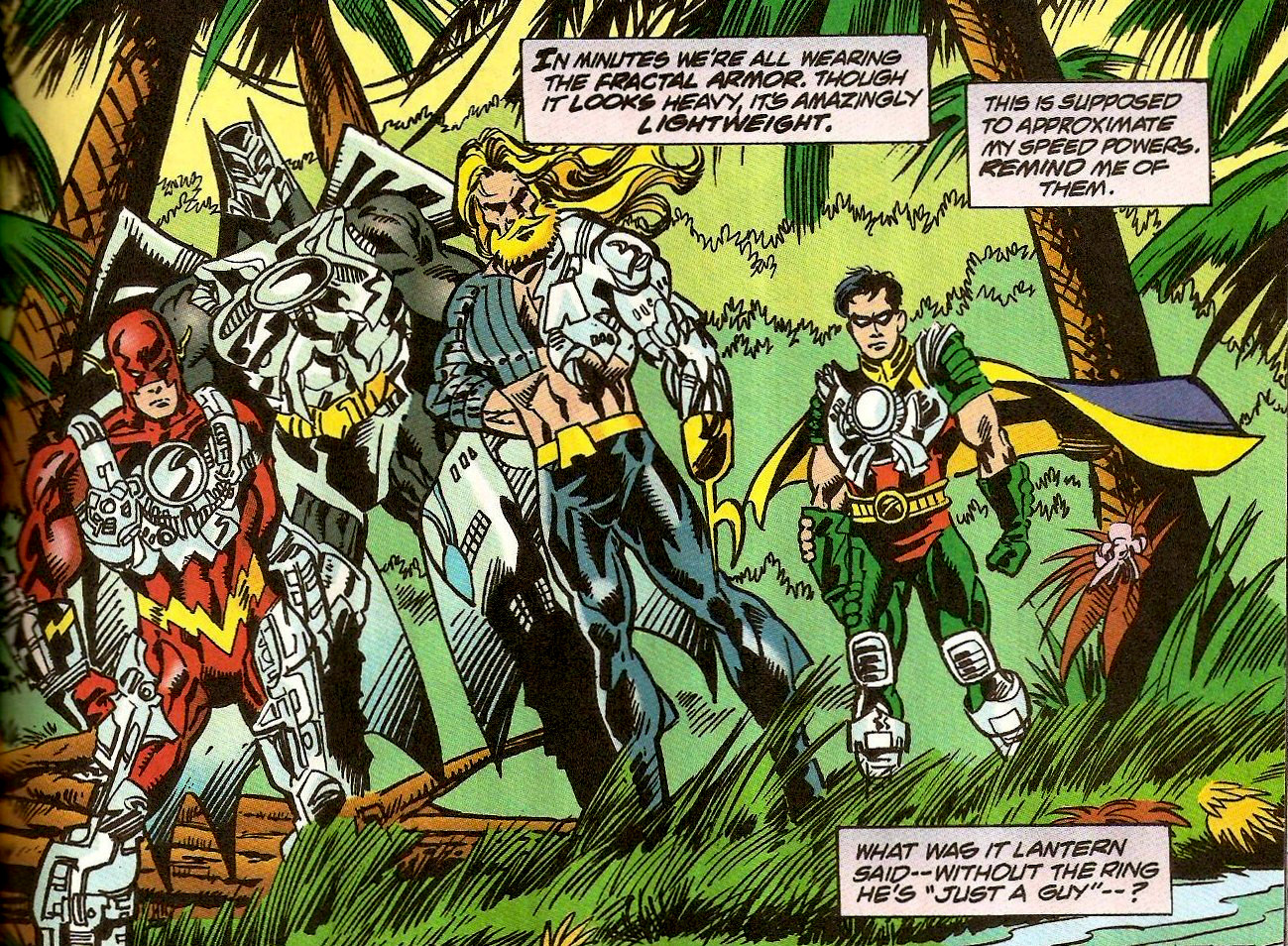
From Total Justice #2 (1996)
The in-story reason for why this techgear was necessary was because the various superheroes had lost their powers and this machinery gave it back to them. It was a clumsy explanation, as people like Batman and Robin didn’t actually have super powers, but it was at least something. This fractal techgear managed to up Robin’s abilities enough that he managed to go toe-to-toe with Darkseid and even survive a point-blank blast from him.
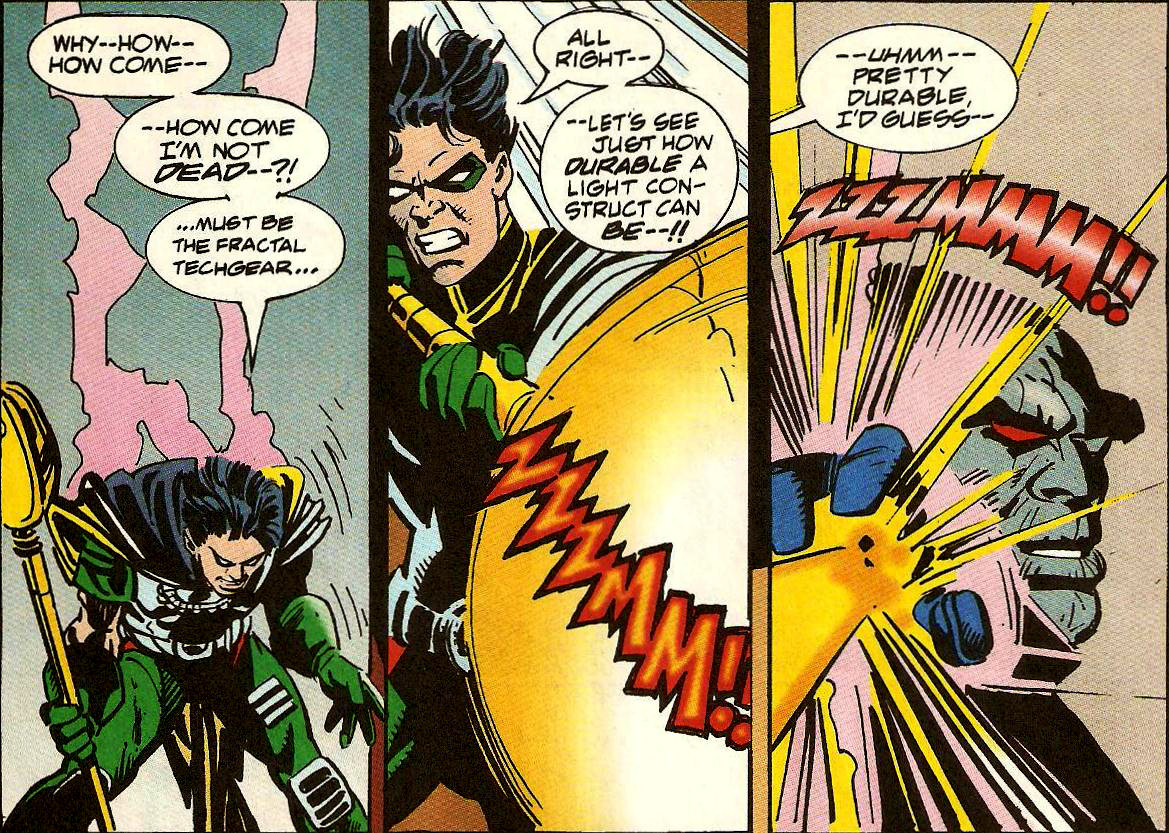
From Total Justice #3 (1996)
The whole thing was pretty absurd. No second Total Justice miniseries was commissioned and the Total Justice toy line was eventually renamed JLA.
Ame-Comi Girls
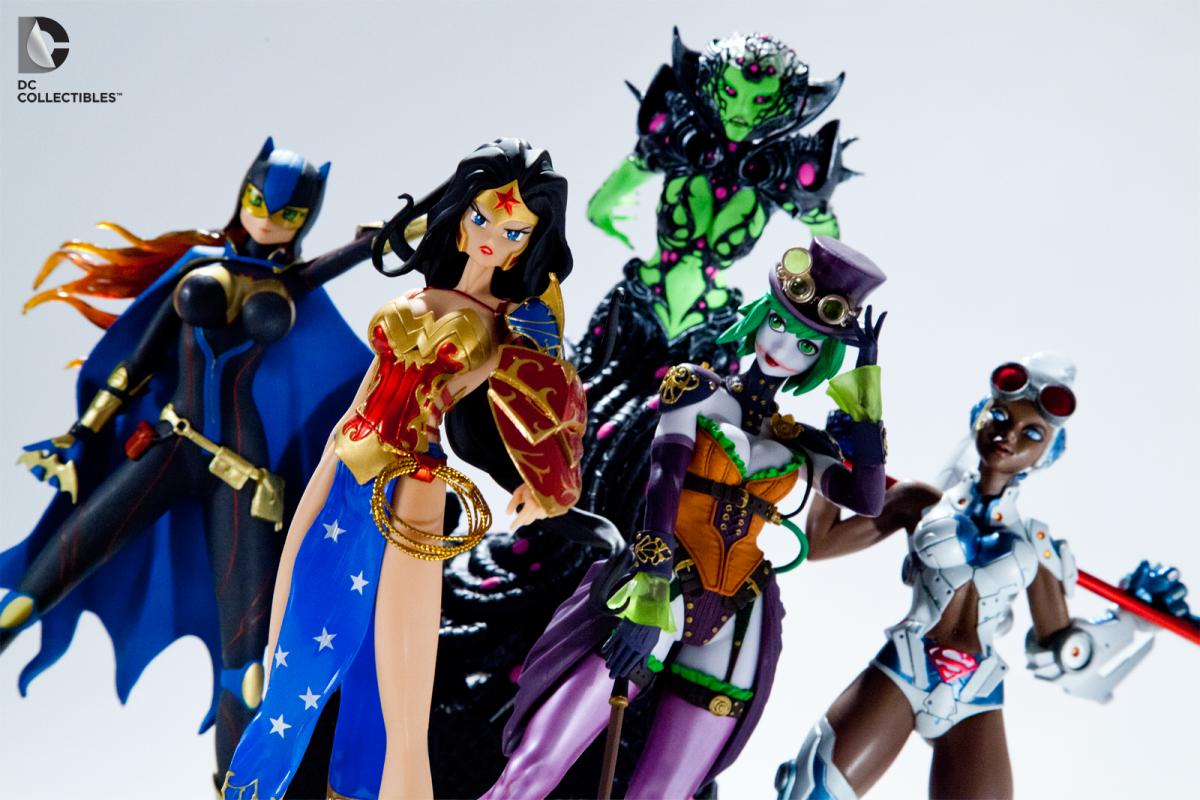
Ame-Comi Figures (2012)
The Ame-Comi line of figures and statues was launched by DC a few years ago in an attempt to merge the female characters of the DCU with a Japanese-inspired art style. Not a single male figure was created for this line, which meant that more obscure figures were given a bit of the limelight instead of more famous male versions of characters. In 2012, DC launched a series of digital-first comic books in which a world was presented in which these female heroes and villains could interact instead of simply living in collectors’ imaginations.
In the Ame-Comi Girls series, which are currently being moved over to print, the only super powered beings on the planet are women. There is no Batman, only Batgirl. The Joker doesn’t exist but Duela Dent does. While John Henry Irons isn’t a character, his niece from regular DCU, Natasha Irons, has taken his job in this story as Steel.
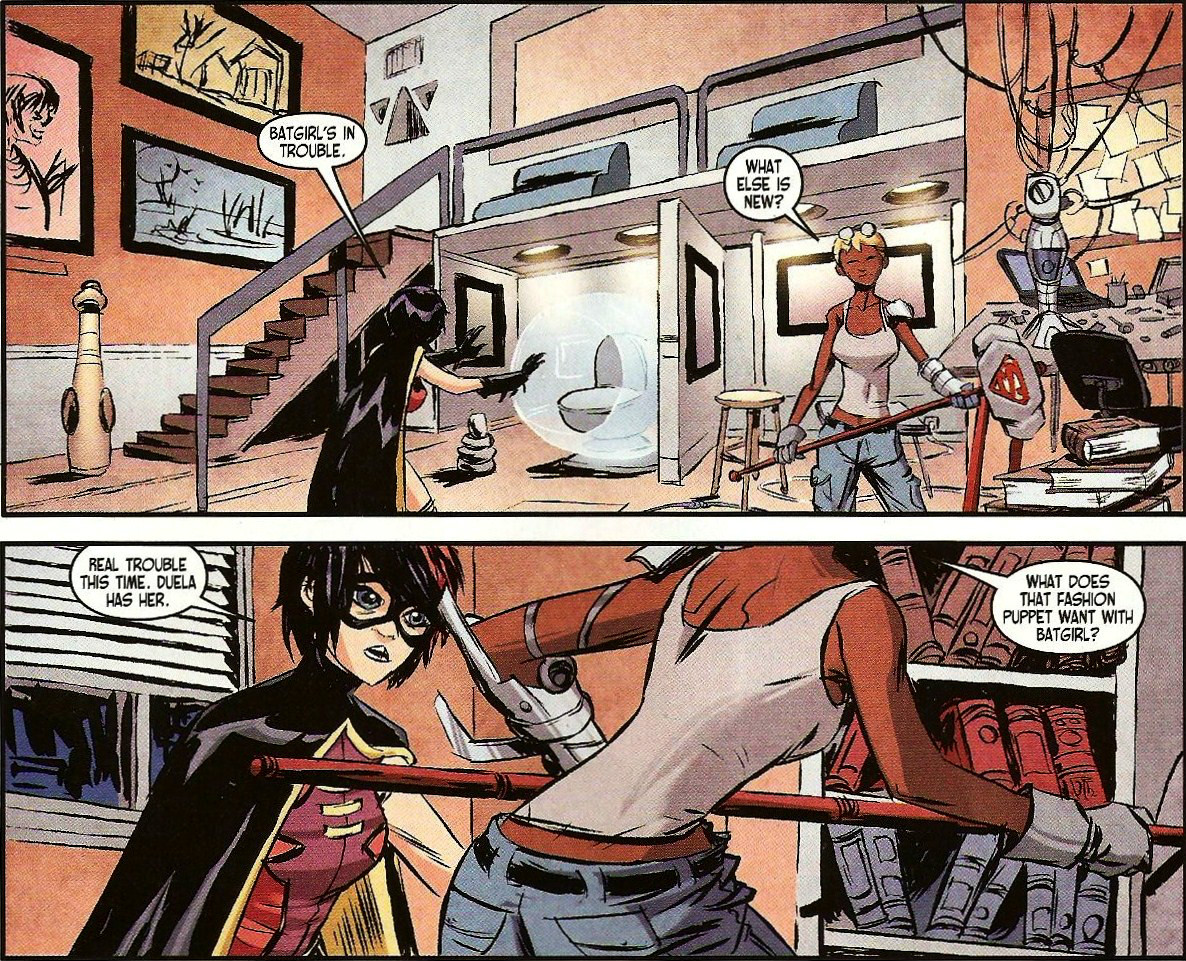
From Ame-Comi Girls (Vol. 1) #2 (2013)
In the comic, not much is made of the fact that every hero and villain is female. It’s a refreshing change and one that, for the most part, comes off as more fun than exploitative. However, these character designs were made by people other than Jimmy Palmiotti and Justin Gray, the series’ writers, or their artist collaborators. This means that the designs can be a little more extreme than the series’ mostly light tone would suggest. However, Palmiotti and Gray find little ways to comment on the look of the series while still keeping everything moving forward like they did when Wonder Woman was presented with her Ame-Comi look.
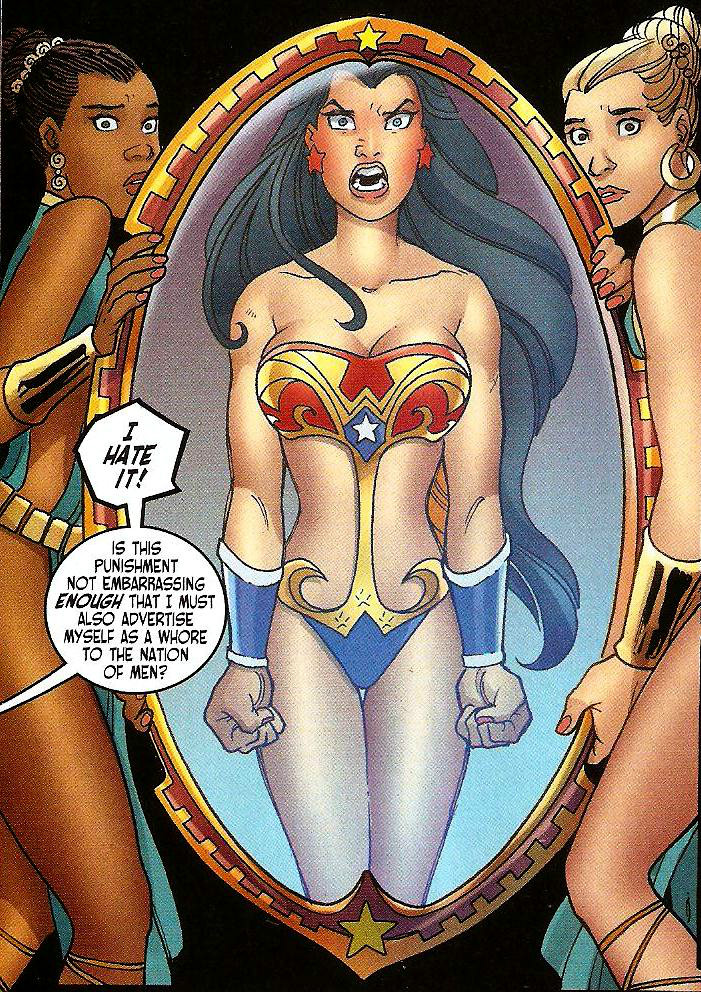
From Ame-Comi Girls (Vol. 1) #1 (2012)
The art in the Power Girl chapters seemed to really push the designs to an extreme cheesecake place, but the other artists are doing a better job at balancing out the elements of the story.
Reading this series reminds me of old Elseworlds tales. Nothing here is in continuity and that’s a definite plus. So far, this is just a story existing in a world without Superman or Batman but one in which heroes did exist. It would be easy to dismiss this series, but it should be given a chance by those readers who are looking for something simple and fun. Perhaps the story will become more complex over time, but for now, it’s pretty straightforward.
While the first Ame-Comi Girls miniseries wraps up with issue #5, a new ongoing series will be launched next month. It too is being pulled from material already available digitally, so these stories won’t be new to people who have been keeping up with the digital releases.
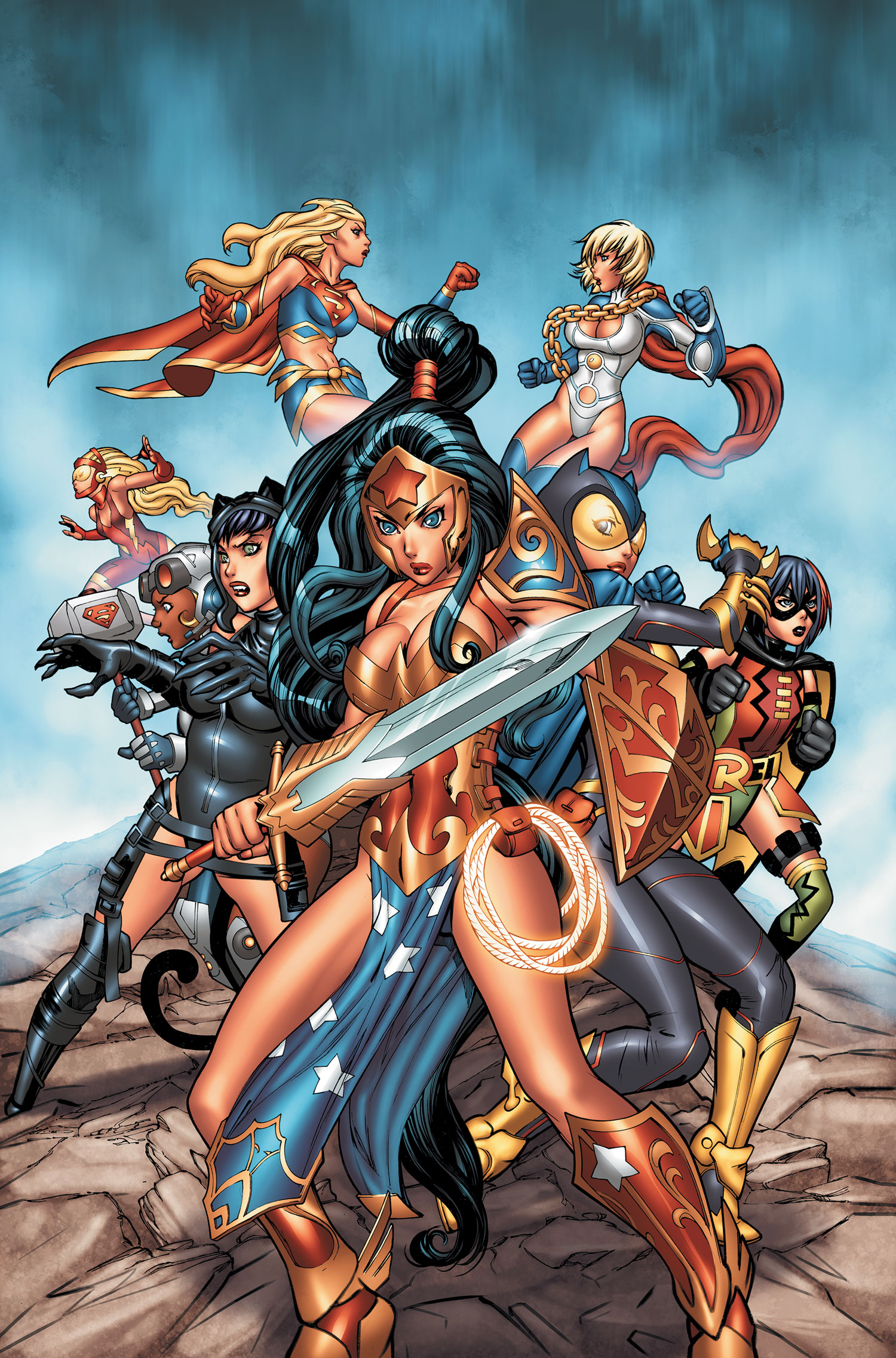
Ame-Comi Girls (Vol. 2) #1 (2013) Cover
Just because a series is based on a toy line doesn’t mean that it is without substance or style. Be it the new Masters of the Universe comics or the Super Powers books drawn by Jack Kirby, action figure comics are as good as the people who create them want them to be. Sometimes it can lead to some enjoyable, if not continuity heavy, stories.
Jeff Reid knows that DC published a M.A.S.K. miniseries in the ’80s but he hasn’t read it so he didn’t discuss it here. He’ll apologize both in the comments section and on Twitter.


I’ve never had any interest in “Masters of the Universe” or He-Man, but I love that art from the comic. “Super Powers” reminds me alot of the “Superfriends” cartoon with the writing just a touch improved (I watched that show all the time, it got really repetitive). “Total Justice” seems really chessy, but Kyle Rayner getting his own (hopefully first) action figure and Tim Drake punching out Darkseid makes it pretty interesting. I’ve been wondering what “Ame-Comi Girls” was for awhile, I knew it was DC characters in a Japanese style but I kept wondering why. The idea of an entire DCU with just female characters seems odd, but I wouldn’t begrudge DC for offering it as a nice compromise for the other universes. Crap, now I want to check out the comic now.
I read the AmiComi Power Girl issue solely for Amanda Conner’s artwork, and I stopped reading the moment her art ended. Wasn’t my cup of tea.
Huh, you’d think an all-female version of the DCU would more to work with. Tho I do find comics you get with action figures, or even as promotionals pretty forgettable. I can’t remember if I read any comics based ON actionfigures.
The art in DC Comics Presents was by Curt Swan, but the mini series art is by George Tuska and the brilliant Alfredo Alcala. Well worth checking out, though the storyline is a bit different than what most people have come to know of Masters of the Universe in the years afterwards.
Man oh man. I remember some of my first Superhero toys were the “Super Powers” figures. I had Joker (with removable coat tails!), Penguin, and Lex Luthor. And a Dr. Fate which I believe was from that set…
Yeah, it looks like Dr. Fate was released in the second wave of Super Powers action figures.
Masters of the Universe and Super powers. yes, this article is about my childhood! (along with the Marvel action figures that all came with their own holographic shield thing for some reason…..)
A couple of notes about the Super Powers figures: They weren’t completely basic. Each one performed a distinct action. When you squeezed Superman’s legs together, he would punch with his arm. Squeeze Flash’s arms and his legs would move in a running motion. The best one, believe it or not, was Red Tornado. Apply pressure to his arms and his entire lower body would spin around, mimicking the character’s power. The other cool thing about this collection was that each character had its own distinct sculpt. They didn’t simply recycle the same body. (I’m looking at you, Masters of the Universe!) Flash was slimmer than Batman, for example, with more of a runner’s physique. It’s also worth noting that Kirby was assigned to the comic series specifically so that he could receive royalties on the action figure sales — a pretty classy move by DC at the time.
Good point. I should have said that the figures simply looked basic but did have the actions you mentioned. I know that I enjoyed Robin’s karate chop action best.
Oh yeah, the karate chop was very cool! Thanks for this great blast of nostalgia.
Man, I loved these things so much as a kid with the Super Powers and Masters of the Universe comics. I picked up one of the Ame-Comi Girls issues because I was curious what it was all about, but a) didn’t realize it was based on action figures and b) never got around to it because I buy way too many comics. But maybe I’ll have to give it a look after seeing this, sounds interesting and can’t argue with the writing team.
http://www.youtube.com/watch?v=NjVugzSR7HA
Palmiotti and Grey do not disappoint with Ame-Comi Girls. The story is a good adventure featuring a mysterious menace using more established villains for some nefarious purpose (that’s as good as I think I can get w/o spoilers). A fun read.